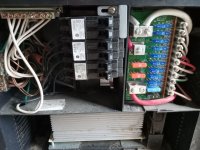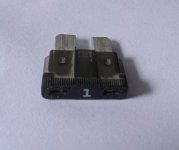Hello to all, I am new to the forum and need help solving an electrical problem. I have a 5th wheel Prowler 22.
Several months ago my Propane Detector went into an alarm, and I could smell gas. I called a service man who said he "Tightened" up some connection and also that my Detector needed to be replaced. (Worked fine before he got there) I fould that he had removed the detector and just stuffed the exposed wire back into the panel wall (I believe that may have momentarily shorted) . Now when I measure the voltage, I have 12.57 VDC, however, when I connect a load...IE A new detector, my fingers.... the voltage drops down to about 3 VDC.
So I guess my question is whether or not the 12 VDC comes right from the 12 volt battery bar, or is there some type of buffer between the two that might be defective.
Thank you for any help you can provide....
Jim
Several months ago my Propane Detector went into an alarm, and I could smell gas. I called a service man who said he "Tightened" up some connection and also that my Detector needed to be replaced. (Worked fine before he got there) I fould that he had removed the detector and just stuffed the exposed wire back into the panel wall (I believe that may have momentarily shorted) . Now when I measure the voltage, I have 12.57 VDC, however, when I connect a load...IE A new detector, my fingers.... the voltage drops down to about 3 VDC.
So I guess my question is whether or not the 12 VDC comes right from the 12 volt battery bar, or is there some type of buffer between the two that might be defective.
Thank you for any help you can provide....
Jim


